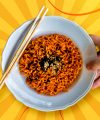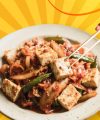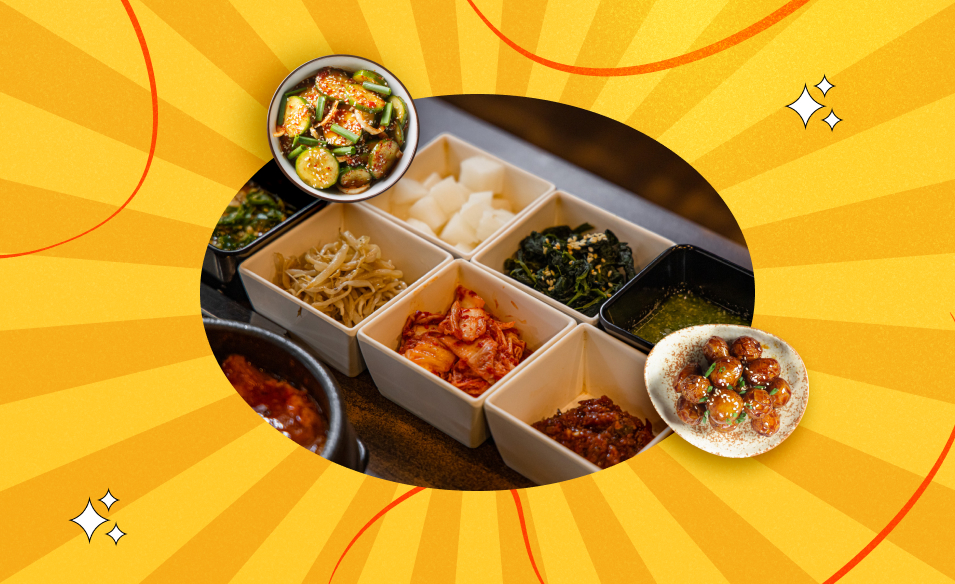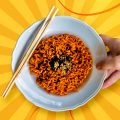Table Of Content
- What Is The Role Of Banchan In A Traditional Korean Meal?
- What Are The Common Ingredients In Korean Side Dishes?
- What Are The Nutritional Benefits Of Banchan?
- 10 Popular Korean Side Dishes (Banchan) You Must Try
- 1. Kimchi
- 2. Japchae
- 3. Korean Spinach (Sigeumchi Namul)
- 4. Korean Potato Salad
- 5. Kkakdugi
- 6. Kongnamul Muchim
- 7. Gamja Jorim
- 8. Oi Muchim
- 9. Jangjorim
- 10. Hobak Bokkeum
- How To Make Banchan At Home: A Step-By-Step Beginner Guide?
- Common Mistakes to Avoid
- Essential Tools
- How to Serve and Pair Banchan with Other Korean Dishes?
- How To Pair Banchan With Appropriate Main Dishes?
- What Are Some Popular Regional Variations Of Banchan Across Korea?
- What Is The Nutritional Value of Banchan?
- What Are The 5 Must-Try Banchan Recipes You Can Make Today?
- 1. Quick Cucumber Salad (Oi Muchim)
- 2. Soy-Braised Potatoes (Gamja Jorim)
- 3. Seasoned Spinach (Sigeumchi Namul)
- 4. Bean Sprout Salad (Kongnamul Muchim)
- 5. Mini Kimchi (Quick Kimchi)
- Why You Should Include Banchan In Your Meals?
- Frequently Asked Questions
Have you ever sat at a Korean dining table? If ues, then I guess you’ve likely noticed it overflowing with a colorful assortment of small dishes.
Well, I love them. I feel like each dish bursts with unique textures. Additionally, they also vary in colors and aromas.
These are banchan. And guess what? Banchan is the heart and soul of Korean dining.
It is nothing like the typical side dishes in Western meals. Banchan aren’t just extras. They’re integral to the meal itself.
Traditionally served in small portions, they balance and complement the main dish, creating harmony in every bite.
From spicy fermented kimchi to sweet glazed potatoes, banchan reflects centuries of culinary tradition rooted in
- Balance
- Health
- Community
Historically, banchan traces back to the Three Kingdoms period (57 BCE–668 CE). During this time, fermented and seasoned vegetables became central to the Korean diet. Why? Due to harsh winters and agricultural cycles.
Over time, regional preferences, availability of ingredients, and social hierarchy shaped how banchan evolved.
Today, they represent the artistry of Korean cooking. Simple ingredients transformed into deeply flavorful, shareable experiences that bring people together.
What Is The Role Of Banchan In A Traditional Korean Meal?

In Korea, a meal isn’t complete without banchan. They transform a simple bowl of rice into a complete dining experience.
Additionally, they offer a spectrum of flavors, such as
- Salty
- Spicy
- Tangy
- Umami
The role of banchan goes beyond taste. It reflects the philosophy of balance known as obangsaek, the harmony of five colors and five tastes (sweet, sour, bitter, salty, and spicy).
A traditional Korean table setting, known as “bapsang” (밥상), typically features rice (bap), soup (guk or jjigae), and multiple banchan arranged symmetrically around them.
According to The Korean Pantry, royal meals during the Joseon Dynasty could include up to 12 varieties of banchan. Each symbolizes abundance and hospitality.
Modern meals usually include three to six kinds of banchan alongside staples like kimchi, namul (seasoned vegetables), and jeon (savory pancakes).
This diversity ensures a perfect balance of flavors and textures, like crunchy, soft, spicy, sweet, and tangy, all in one sitting.
What Are The Common Ingredients In Korean Side Dishes?
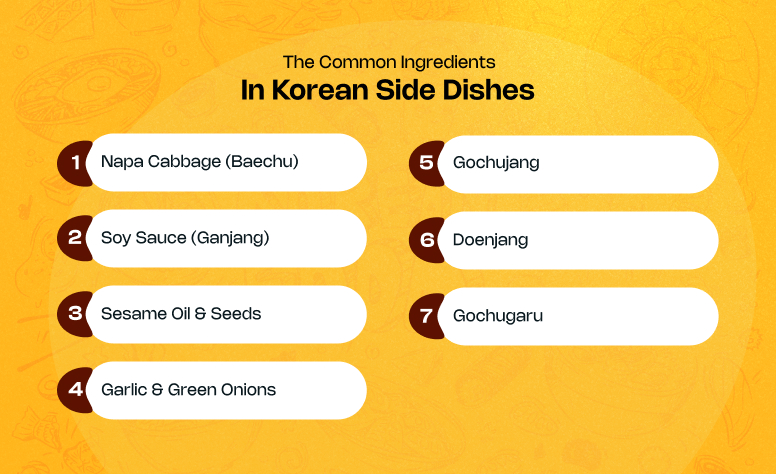
What makes banchan so flavorful is the thoughtful use of a few staple ingredients.
Most Korean kitchens rely on a core pantry of fermented sauces, oils, and seasonings that build layers of depth into every dish.
Essential Ingredients:
- Napa Cabbage (Baechu) – The base for the world-famous kimchi, this crunchy cabbage absorbs marinades beautifully.
- Soy Sauce (Ganjang) – Adds salty umami depth, often used in vegetable and meat-based banchan.
- Sesame Oil & Seeds – Provide a nutty aroma and finish that ties dishes together.
- Garlic & Green Onions – Staples in Korean cooking, bringing sharpness and fragrance.
- Gochujang – A fermented red chili paste that gives heat, sweetness, and umami.
- Doenjang – Fermented soybean paste, offering a savory, earthy tone to vegetable banchan.
- Gochugaru – Korean red chili flakes that vary in heat but are key to kimchi and spicy sides.
What Are The Nutritional Benefits Of Banchan?
Many banchan are low in fat and rich in fiber, antioxidants, and probiotics. Fermented varieties like kimchi aid digestion and gut health, while vegetable dishes offer a powerhouse of vitamins A, C, and K.
According to BBC Good Food, regular consumption of fermented Korean foods may support immune function and metabolic health due to beneficial lactic acid bacteria.
From a health perspective, this makes banchan one of the most balanced and nutrient-dense additions to any meal delicious and guilt-free.
10 Popular Korean Side Dishes (Banchan) You Must Try
1. Kimchi

No list of banchan is complete without kimchi. This fermented cabbage dish is synonymous with Korean identity.
There are over 200 regional varieties, from spicy baechu kimchi (napa cabbage) to mild baek kimchi (white kimchi without chili).
Made from cabbage, radish, garlic, ginger, and gochugaru, it ferments for days or weeks, developing tangy, complex flavors.
According to Kimchi Chronicles, fermentation was initially a preservation method during cold winters. But today, it’s a beloved symbol of Korean heritage.
Kimchi is probiotic-rich and known to boost digestion and immunity, making it one of the healthiest banchan options around.
2. Japchae
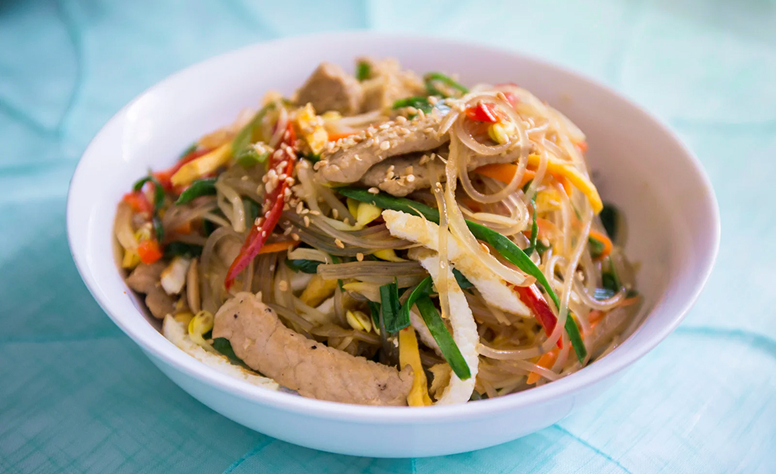
A festive noodle dish made from sweet potato starch noodles (dangmyeon), stir-fried with vegetables and beef or mushrooms. Japchae strikes a perfect balance—savory soy sauce notes, sweet undertones, and a glossy sesame oil finish.
Traditionally served during celebrations like Chuseok (Korean Thanksgiving), Japchae symbolizes prosperity and happiness. Its chewy texture and vivid colors make it a star among banchan. Plus, it’s naturally gluten-free and adaptable to vegetarian diets by skipping the meat.
3. Korean Spinach (Sigeumchi Namul)

A simple yet elegant dish of blanched spinach (시금치나물) seasoned with garlic, soy sauce, and sesame oil. It’s one of the easiest banchan to prepare and is a staple in bibimbap.
High in iron and vitamin K, sigeumchi namul is both nutritious and refreshing. As The Korean Pantry notes, its mild flavors balance the stronger, spicier sides, maintaining harmony in the meal.
4. Korean Potato Salad
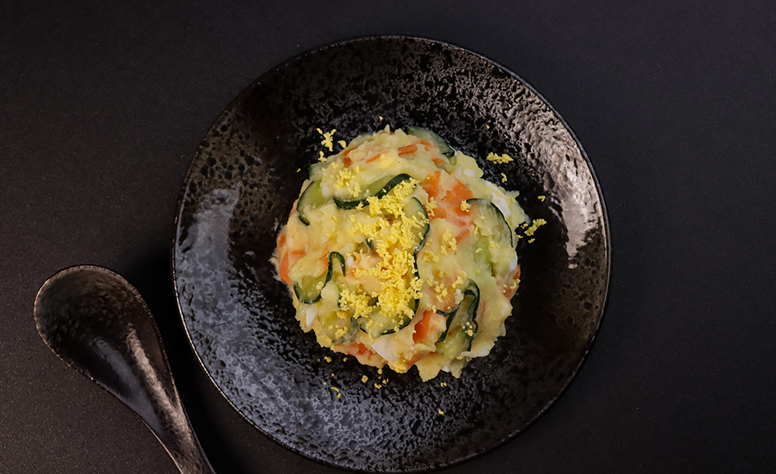
A softer, creamier version of the Western potato salad, this Korean-style version includes apples, cucumbers, and sometimes boiled eggs for sweetness and crunch.
Unlike heavily seasoned Western salads, Korean potato salad is light, subtly sweet, and served chilled—perfect alongside spicy dishes like kimchi jjigae. Its unique combination of textures has made it a comfort food favorite across generations.
5. Kkakdugi

Kkakdugi is a type of cubed radish kimchi that’s crunchy, spicy, and refreshing. It pairs perfectly with gukbap (soup with rice) or seolleongtang (ox bone soup).
Its bold texture and clean flavor profile come from fermented daikon radish seasoned with garlic, ginger, and chili. According to Maangchi, the fermentation process enhances its crunch while mellowing the spice—making it a must-have on any Korean table.
6. Kongnamul Muchim
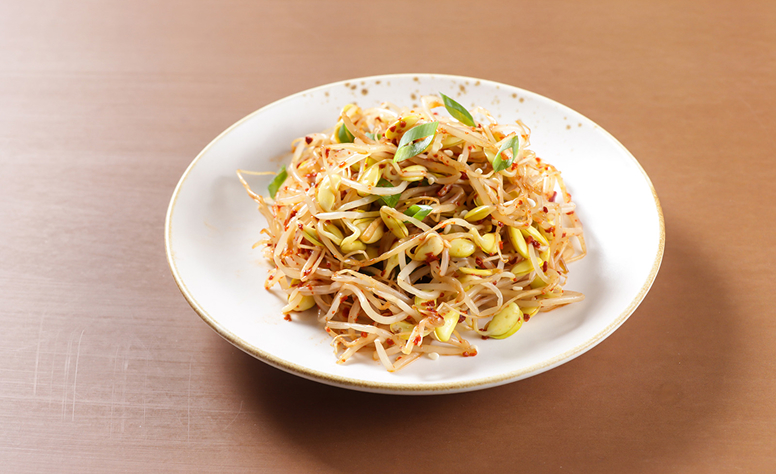
Kongnamul muchim is a staple banchan found on almost every Korean table.
Made from blanched soybean sprouts tossed with sesame oil, garlic, salt, and green onions, this dish delivers freshness and crunch in every bite.
Soybean sprouts are rich in vitamin C, protein, and fiber, making this one of the most nutrient-dense and affordable side dishes.
According to BBC Good Food, sprouted legumes like soybeans are a great source of plant-based nutrients that support gut health and energy.
It’s mild, slightly nutty, and refreshing. So, it is an ideal counterbalance to spicy or rich main dishes like bulgogi or samgyeopsal.
7. Gamja Jorim

Gamja jorim is a comforting dish made by simmering cubed potatoes in a soy-based glaze with garlic and a hint of sugar until they become glossy and tender.
This sweet-savory banchan often reminds Koreans of childhood and home-cooked meals.
The sauce caramelizes beautifully, giving the potatoes a sticky coating that’s perfect with rice.
According to Mangchi, you can add carrots or a touch of corn syrup. You must try this out for an authentic sheen and deeper flavor.
It’s the ultimate comfort food. It is a balance of salty, sweet, and hearty.
8. Oi Muchim

Oi muchim is a quick, no-cook banchan made from sliced cucumbers tossed in vinegar, chili flakes, sesame seeds, and garlic.
It’s crisp, tangy, and slightly spicy—an instant palate cleanser. According to The Korean Pantry, oi muchim represents the Korean value of jeong, or hospitality, as it’s often served fresh to guests.
Perfect for summer meals, this dish hydrates and refreshes the palate, pairing wonderfully with grilled meats or rice bowls.
9. Jangjorim

This banchan features tender beef (usually brisket) simmered slowly in a soy-based sauce with garlic, chili, and sometimes quail eggs.
Originally created as a preserved dish for long journeys, jangjorim stores well in the fridge for several days. The sauce thickens over time, deepening in flavor.
As Kimchi Chronicles notes, jangjorim reflects Korea’s long tradition of preserving protein-rich foods in soy brine, a practice dating back to ancient temple cuisine. Today, it’s often served as a protein-packed side for lunchboxes or as a topping for warm rice.
10. Hobak Bokkeum

A soft and lightly seasoned dish made by stir-frying sliced zucchini with garlic and green onions in sesame oil.
Hobak bokkeum celebrates the natural sweetness of summer zucchini and adds a gentle flavor contrast to spicy dishes. It’s vegetarian, low-calorie, and ready in minutes—an excellent banchan for busy weeknights or balanced meal prep.
How To Make Banchan At Home: A Step-By-Step Beginner Guide?

Learning to make banchan is simpler than most think. It’s all about balance, mixing raw, cooked, spicy, and mild dishes so every meal feels harmonious.
- Start Small: Pick 3 to 4 easy dishes like sigeumchi namul, gamja jorim, and oi muchim.
- Prep Ingredients in Advance: Wash, cut, and store vegetables before cooking to save time.
- Season Lightly: Korean flavors are about balance, avoid over-salting or over-spicing.
- Use Quality Oils and Sauces: Gochujang, doenjang, and sesame oil define authentic flavor; choose premium brands like those recommended by The Korean Pantry.
- Focus on Texture: Combine crunchy (radish, cucumber) with soft (tofu, spinach) dishes.
Common Mistakes to Avoid
- Overcooking vegetables: They should remain slightly firm.
- Using old sesame oil: It can taste bitter; fresh oil is key.
- Skipping fermentation time: Dishes like kimchi and kkakdugi need patience to develop their signature tang.
Essential Tools
- Stoneware or earthen pots (onggi) for fermentation.
- Sharp knives for even slicing.
- Use glass containers for storage to preserve flavor and freshness.
As Maangchi emphasizes, “Cooking banchan is more about rhythm than recipes—once you understand the balance of heat, salt, and sweetness, everything else falls into place.”
How to Serve and Pair Banchan with Other Korean Dishes?
Guys! This is really very important. When you serve banchan beautifully, it enhances the entire dining experience.
You can follow these easy yet impactful tips to present Banchan beautifully:
- Use small ceramic bowls to highlight color contrast.
- Serve at room temperature or slightly chilled (never too hot).
- Arrange dishes symmetrically around rice and soup to follow the traditional bapsang layout.
How To Pair Banchan With Appropriate Main Dishes?
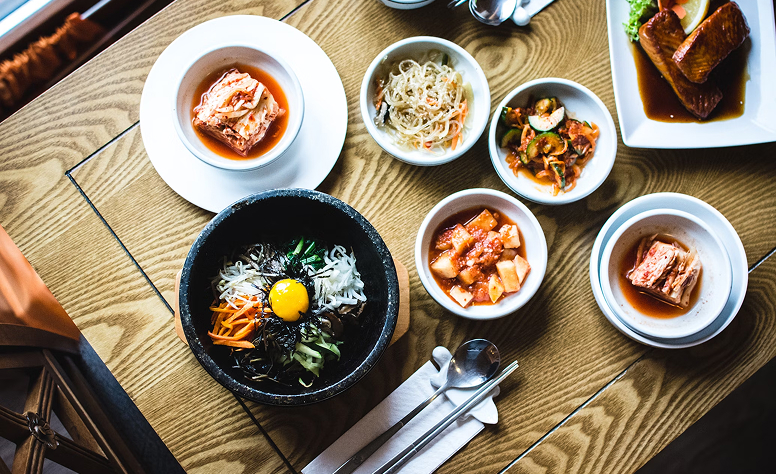
Now that I have explained to you how you should serve banchan, I will tell you which Banchan goes best with what main dish:
- Bibimbap pairs perfectly with namul (seasoned vegetables) and kimchi.
- Bulgogi and galbi go best with mild sides like sigeumchi namul and gamja jorim.
- Samgyeopsal (grilled pork belly) benefits from tangy oi muchim or spicy radish kimchi.
- For fusion lovers, banchan can even accompany non-Korean dishes. Try oi muchim with grilled fish or gamja jorim alongside roasted chicken, an excellent way to add umami and freshness.
What Are Some Popular Regional Variations Of Banchan Across Korea?

Korea’s geography and climate have produced a stunning diversity of banchan styles across regions:
- Seoul (Central Region): Elegant and mild flavors. Royal court cuisine (surasang) emphasized balance and presentation.
- Jeolla Province: Known for abundant, boldly seasoned dishes—locals often serve over 10 varieties at once. Jeon (pancakes) and spicy seafood sides are regional favorites.
- Gyeongsang Province: Prefers salty and robust flavors, often using anchovy broth or salted seafood.
- Gangwon Province: Mountainous terrain means more wild greens and foraged vegetables in dishes like gosari namul (bracken fern).
- Jeju Island: Surrounded by the sea, Jeju cuisine highlights seaweed and seafood-based banchan, such as miyeok muchim (seaweed salad).
These differences show how banchan evolved not just from taste, but from environment and culture—making each Korean meal a reflection of its region.
What Is The Nutritional Value of Banchan?
Beyond flavor, banchan are a powerhouse of nutrition.
The sides that you ferment, like kimchi and kkakdugi, are packed with probiotics that support gut health and immunity. Vegetable banchan offer antioxidants and fiber, while soy-based dishes provide plant protein.
According to BBC Good Food, traditional Korean diets rich in banchan are associated with lower obesity rates and improved heart health, largely due to minimal oil use and high vegetable intake.
For modern, health-conscious eaters, banchan can easily fit into vegetarian, low-carb, or even gluten-free diets. They’re light yet satisfying—a model for mindful eating.
What Are The 5 Must-Try Banchan Recipes You Can Make Today?
Well, I am recommending them cause they are a personal favorite. Trust me, you are just one bite away from making these Banchan recipes your staple ones:
1. Quick Cucumber Salad (Oi Muchim)

- Time: 10 min
- Ingredients: 1 cucumber, 1 tsp gochugaru, 1 tsp sesame oil, 1 tbsp rice vinegar, salt.
- Directions: Slice the cucumber, sprinkle salt, rest 5 minutes, rinse, then mix with seasonings.
2. Soy-Braised Potatoes (Gamja Jorim)
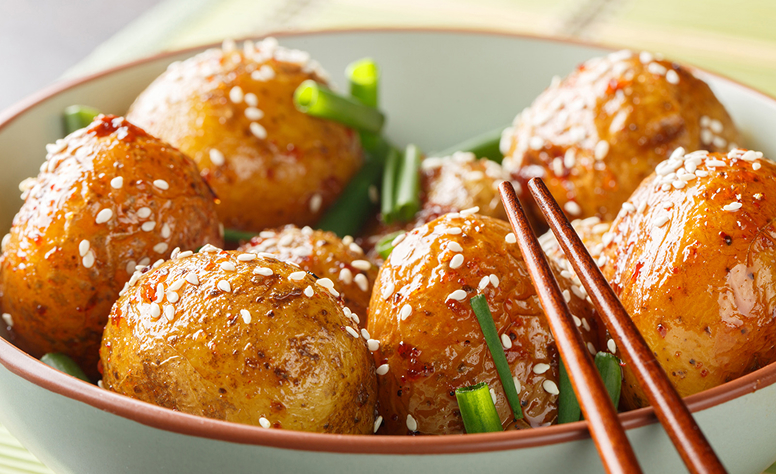
- Time: 20 min
- Ingredients: Potatoes, soy sauce, sugar, garlic, sesame oil.
- Directions: Simmer until the liquid reduces and coats potatoes.
3. Seasoned Spinach (Sigeumchi Namul)
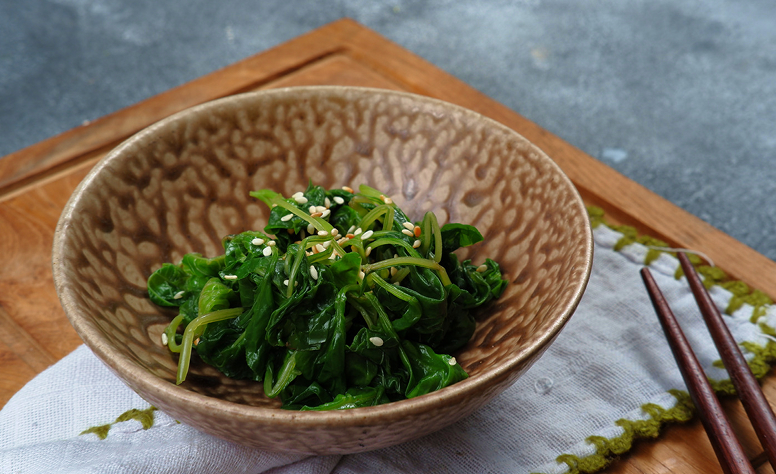
- Time: 8 min
- Ingredients: Spinach, soy sauce, sesame oil, garlic, sesame seeds.
- Directions: Blanch spinach, squeeze water, and mix with seasoning.
4. Bean Sprout Salad (Kongnamul Muchim)
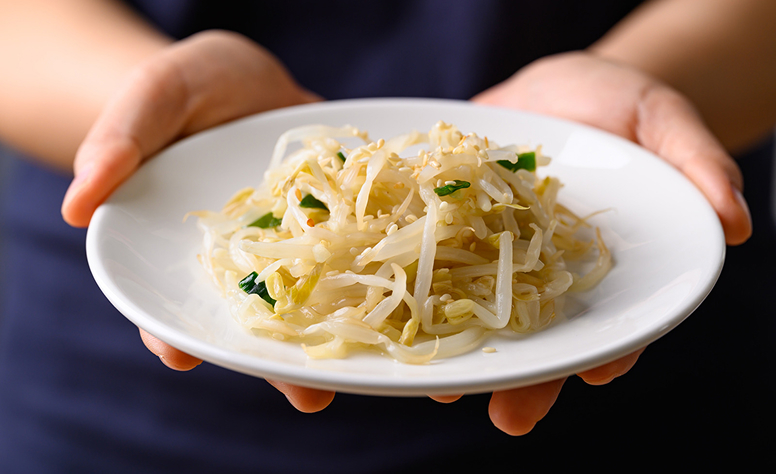
- Time: 10 min
- Ingredients: Soybean sprouts, salt, garlic, sesame oil.
- Directions: Blanch sprouts briefly, season, and serve warm or chilled.
5. Mini Kimchi (Quick Kimchi)

- Time: 1 hour (plus 1–2 days fermentation)
- Ingredients: Napa cabbage, gochugaru, garlic, ginger, fish sauce, sugar.
- Directions: Salt cabbage, rinse, coat with seasoning paste, and ferment at room temperature before refrigerating.
Why You Should Include Banchan In Your Meals?
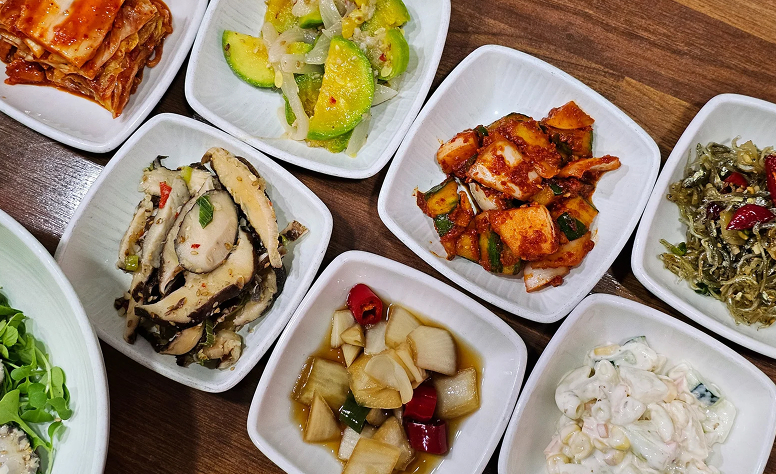
Banchan is more than a collection of side dishes, it’s a way of life that celebrates variety, health, and togetherness. Each dish, no matter how small, adds meaning to the meal through flavor and balance.
Incorporating banchan into your diet encourages mindful eating, where you appreciate textures, colors, and tastes in harmony.
Whether you cook them at home or order from a Korean restaurant, these dishes offer both culinary diversity and nutritional wisdom honed over centuries.
As Kimchi Chronicles beautifully puts it, “To share banchan is to share Korea’s soul.”
So, set your table, prepare a few small plates, and experience the joy of banchan, bite by bite.
Frequently Asked Questions
1. What Is The Best Way To Store Banchan?
Store in airtight glass containers and refrigerate. Fermented ones like kimchi can last weeks, while fresh veggie sides last 2–3 days.
2. How Do You Pronounce “Banchan”?
You need to pronounce this as bahn-chahn (반찬), meaning “side dishes.”
3. Can You Make Banchan In Advance For A Party?
Yes. Most banchan taste even better the next day as flavors meld.
4. Are Banchan Dishes Spicy?
Not all. While some use chili paste (gochujang), many like sigeumchi namul or gamja jorim are mild.
5. What’s The Difference Between Kimchi And Banchan?
Kimchi is a specific dish that you have to prepare through fermentation, whereas banchan is a broader term for all Korean side dishes (kimchi included).
6. Can Banchan Be Eaten As A Main Dish?
Some, like japchae or jangjorim, can serve as light mains with rice.
7. Are All Banchan Vegetarian-Friendly?
Many are, but check for fish sauce or anchovy seasoning in recipes.
8. How Long Does Homemade Banchan Last In The Fridge?
Fresh vegetable banchan: 2–3 days; fermented ones: up to several weeks.
9. What Is The Healthiest Banchan Dish?
Kimchi and kongnamul muchim top the list—low in calories, rich in fiber and probiotics.
10. Can I Substitute Ingredients In Banchan Recipes?
Absolutely. Try tamari instead of soy sauce for gluten-free versions, or swap sesame oil with olive oil for a lighter touch.






